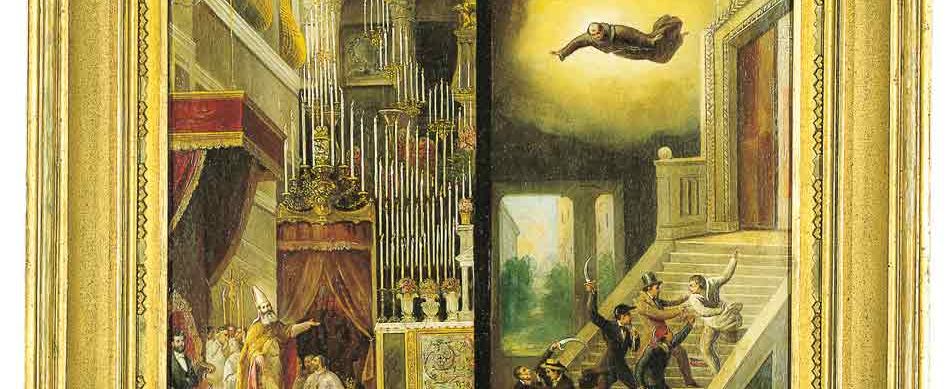THE BASILICA of Saint Anthony in Istanbul, known as Sent Antuan Kilisesi, is the largest Catholic church in the most populated city in Turkey. Archbishop Angelo Roncalli, the future Pope St John XXIII, preached in that church from 1934 to 1944 when he was the Vatican’s ambassador to Turkey. Much loved by the people of Turkey, they still call John XXIII “The Turkish Pope.” During those ten years Archbishop Roncalli had the Gospel translated into Turkish, and he also promoted devotion to St Anthony among the country’s overwhelmingly Muslim population. You may not believe it, but devotion to St Anthony is still very strong among the country’s Muslim population, especially among women.
The Friars Minor Conventual, who are in charge of the church, say that as many candles are used there as in the Basilica in Padua. These Muslim devotees find what they otherwise would not find in their mosques in that church: the possibility of praying in front of a statue of St Anthony, touch it, and burn incense and candles in front of it; they are even able to write petitions to their beloved Saint. These Muslim devotees say that they turn to him because Anthony listens to them and answers them, and because his mediation with God is always effective.
In 1876 a miraculous event occurred in connection with St Anthony’s Basilica in Istanbul. This event has been immortalized by a beautiful painting now on display in the Museum of Popular Devotion located in one of the five cloisters adjoining the Basilica of Saint Anthony in Padua. This painting on canvas contains something very peculiar: a dagger inserted at the top of the frame.
But how did all this come about?
On the late afternoon of June 13, 1876 (our Saint’s feast day), Bishop Antonio Maria Grasselli, the Apostolic Vicar of Istanbul, was delivering a beautiful homily in the packed church of St Anthony. Believing that the bishop’s residence was empty, four robbers, armed to the teeth with daggers, broke into the bishop’s palace in search of valuable objects.
The Bishop’s two servants, who had remained in the palace to prepare dinner, heard the noise of the intruders, and when they saw the outlaws inside the palace, they tried to shout them away. The robbers, however, were not to be rebuffed, and attacked the two servants with murderous intent. In the melee that ensued one of the servants was stabbed in the arm, and he then shouted, “St Anthony, please help me!” Suddenly, a strange light, a sort of luminous halo, appeared in the room. Believing the police had arrived, the robbers fled the palace immediately. In their hurry, however, they left behind a remembrance of their crime – a sharp dagger with a bone handle.
On returning to his palace the bishop was struck by the courage of his servants and of their devotion to the Saint. Desiring to thank the Wonder-Worker for his miraculous intervention, he commissioned the beautiful painting illustrating this editorial. A few months later Bishop Grasselli came to Padua and donated that painting to the Rector of the Basilica as a perennial reminder of Saint Anthony’s miraculous intervention.
If you ever come to Padua to visit the Saint’s Tomb don’t forget to also visit the Museum of Popular Devotion. Its rooms contain a wonderful and moving collection of many objects donated to the Basilica by devotees from all over the world in gratitude to the Saint for a grace received. These witnesses of faith and love give us a clear idea of the greatness of devotion to a Saint who is always close to anyone seeking his help, even though they are not Christian.




